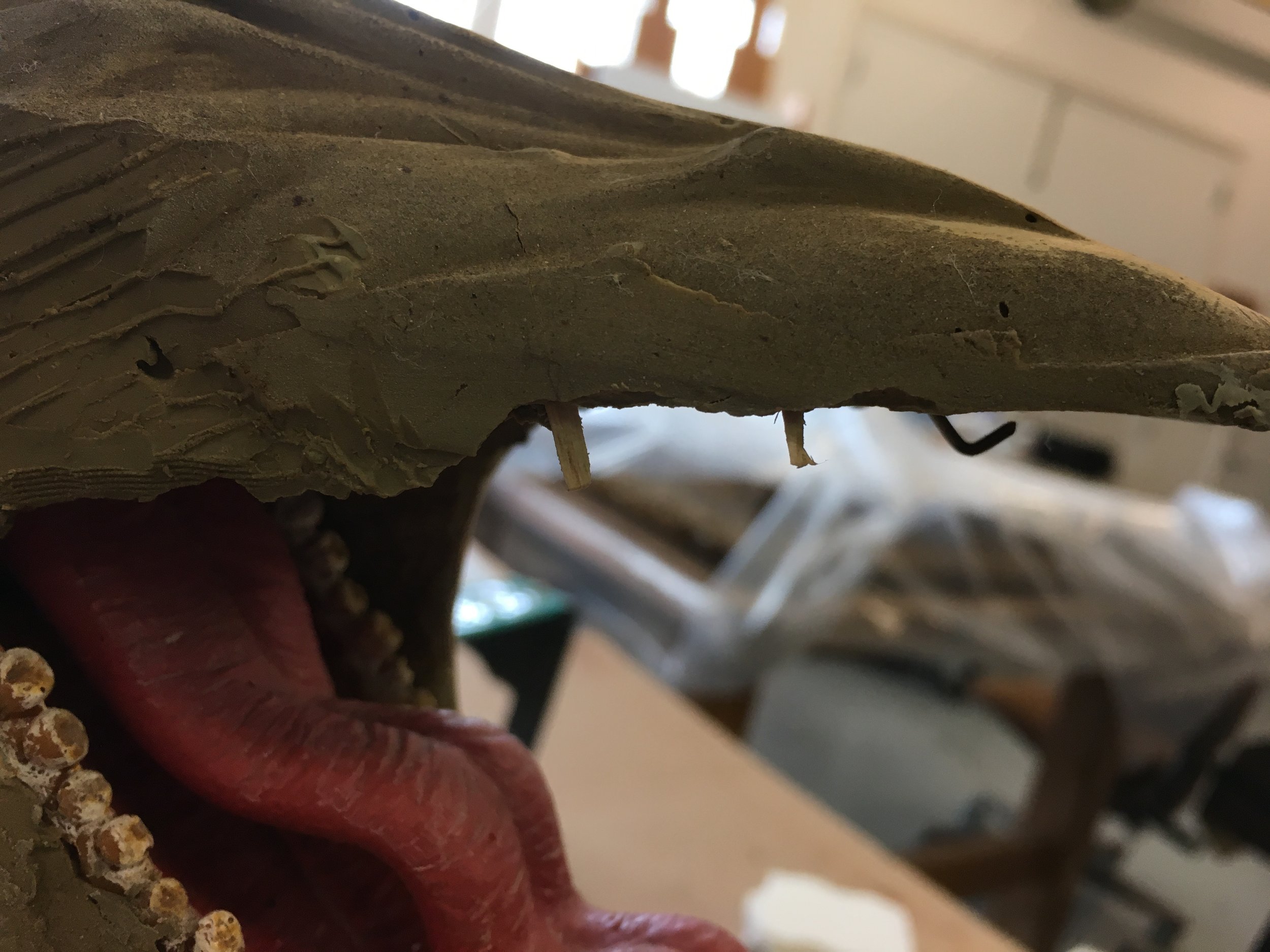Beetlejuice Stop Animation Bust
History
Image - Before treatment
This Claymation sculpture was used in the 1988 movie Beetlejuice, which was directed by Tim Burton, produced by The Geffen Film Company, and distributed by Warner Brothers. It represents the character Barbara Maitland (played by Geena Davis) as her head is changed into a monstrous bird-like creature with elongated beak with teeth. This stop-animation model is one of a series that were recently sold by the movie sculptor/prop maker (unknown) from his warehouse where they were slowly melting/slumping from the intense heat of the Florida sun.
The artifact was brought to our facility in three distinct pieces; the painted Plasticine clay head (with cast resin gums and teeth) on a plaster base, Barbara’s recreated cloth blouse with hair section on a fiberglass support form, and her partial hair piece/wig with fiberglass scalp.
(continued)
The head is only painted on the figure’s proper left side because of the movie’s photography angle. The Plasticine clay had cracked where the proper right jaw meets the skull, along both front portions of the side of the upper jaw, and along the upper proper left jaw. Several pieces of the jaw were missing. In addition, the upper hard resin set of teeth (with palette) is all but detached, hanging by a single thin round (now rusted) “L” shaped pin. There are several gouges in the neckline of the Plasticine clay from the top edge of the fiberglass dress/blouse support weight pressing downward.
Cleaning
Image - Half cleaned
All surfaces of the metal, Plasticine clay, painted Plasticine clay, and fiberglass were cleaned of heavy dust layers using the appropriate solvents and plaster was cleaned with crumbled eraser. The hair and blouse that came with the bust were carefully cleaned using a nylon screen and HEPA vacuum.
Consolidation, Fills, & Inpainting
Image - Detail of damage on the clay model
The cracking lower jaw was pinned together with stainless steel pins, which were intended to act as internal supportive armatures, specifically placed to strengthen the piece to prevent further cracking. Separated sections and losses were also filled in with new Plasticine clay and additional armatures. The loose upper teeth were originally secured with several metal “L” shaped pins that had come loose. The teeth were temporarily removed for repair and then reattached using a conservation grade adhesive. New sections of clay were then inpainted using conservation grade paints.






